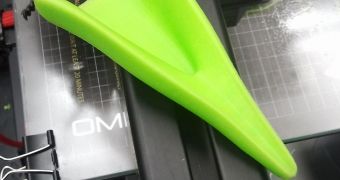Prosthetic limbs are among the things that 3D printing technology is expected to revolutionize the fastest, but the Warsaw Zoo authorities have something a lot more radical in mind: a 3D printed penguin beak.
Among the many animals living at the Warsaw Zoo is Blondas, an African Penguin that somehow lost its lower beak in the past.
Whether during a fight or suffering a fall, the fact is that the penguin cannot eat unaided. Right now, it survives by being hand-fed, but it's still a struggle.
3D printer distributor MTT Polska, during a visit at the Museum, got the idea that maybe 3D printing could help the situation.
After all, if it can be used to make replacement limbs, hip implant and even replacement skulls, why not make a replacement beak?
So now MTT Polska has enlisted the help of Omni3D to figure out how to make a replacement beak. They needed the beak of another penguin first though.
Fortunately, there was one available, from a specimen that died of natural causes, so Omni3D scanned it from 12 different angles, until they had a model ready to be printed.
The prosthesis will be printed this week from eco-plastic, after which a surgical intervention, of sorts, will need to be staged by veterinarians.
They can't just snap the prosthesis in place after all. They will have to grind down the remains of the lower beak first, and then place the plastic one over it.
Plastic and silicon variants will be made as well, in case the first one falls off or doesn't do well in saltwater (where penguins spend much of their time swimming).
Konrad Sierzputowski, the omni3D founder, admits that the firm has never done something like this before, but there is no reason it shouldn't work.
Even if it comes down to periodically changing the prosthesis, it will still save the life of Blondas and let it lead a relatively normal life.
It might take several tries to get the right model, since Blondas isn't going to have an identical beak to the one the company scanned. But since Omni3D expects the need for several material options anyway, that's not going to be a problem.
“We have never done anything like this before, but we are pretty sure it will work,” Konrad Sierzputowski said.
“The technology is known, thanks to [other cases]. Prototyping is what 3D print[ing] is needed for. The most important and the most difficult part is to design ideal model. Then, everything else – like choosing the material or matching the artificial beak with the part with which the penguin will live – will be much easier.”

 14 DAY TRIAL //
14 DAY TRIAL //